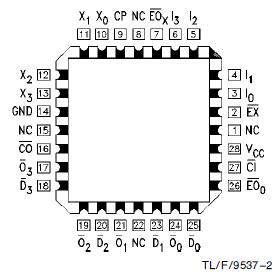54F407: Features: · High-speedÐgreater than a 30 MHz microinstruction rate· Three 4-bit registers· 16 instructions for register manipulation· Two separate output ports, one transparent· Relative address...
floor Price/Ceiling Price
- Part Number:
- 54F407
- Supply Ability:
- 5000
Price Break
- Qty
- 1~5000
- Unit Price
- Negotiable
- Processing time
- 15 Days
SeekIC Buyer Protection PLUS - newly updated for 2013!
- Escrow Protection.
- Guaranteed refunds.
- Secure payments.
- Learn more >>
Month Sales
268 Transactions
Payment Methods
All payment methods are secure and covered by SeekIC Buyer Protection PLUS.

 54F407 Data Sheet
54F407 Data Sheet







